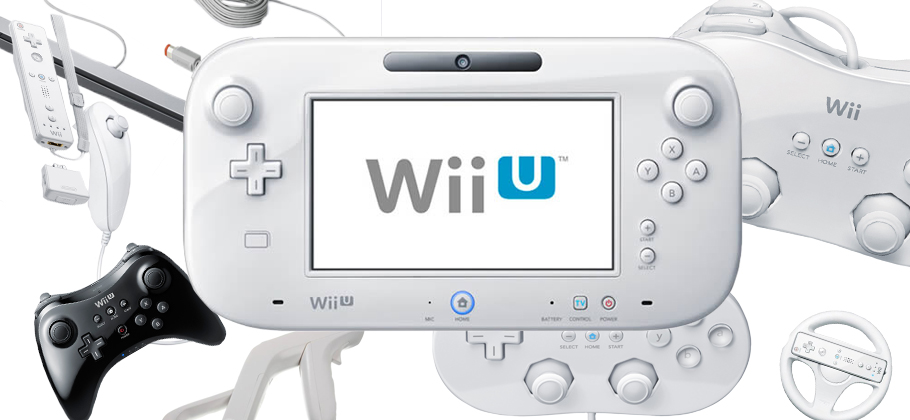Traditionally, Nintendo has been a company about innovation. When they first appeared on the home console scene with the original Nintendo Entertainment System, they bucked the joystick and introduced the directional pad. The D-Pad remains a staple on controllers to this day, appearing on almost every, if not all, controllers, to now. From this innovation in 1983, they would go on to create many more player interaction changes: the directional stick, L/R buttons, rumble, and of course, motion control.
When the Wii U was announced, the announcement of a touch screen controller felt forced to me. It seemed as though Nintendo was not innovating, they were just trying to do something so strange that it would appear new. This is not to say that a screen on the controller does not introduce some new gameplay possibilities, most notably seen in the tech demos, but most are not very creative or practical (options screen and maps).
In the case of the Wii U, I believe Nintendo wasn’t innovating, but merely trying to catch up to or onto the tablet movement that was just beginning to make steam. It’s a smart move, if you want to get into the tablet business by building a tablet that can’t be far from a hub.
The problem though, doesn’t just come from an inability to classify the Wii U as a tablet or console. Classification problems are too often creative problems waiting to be solved. The previous arguments are more of hurdles that must be overcome before the Wii U tablet controller’s potential is unlocked.
Non-creative problems exist as well. The Wii U is severely underpowered compared to current-gen systems. Reports from developers put it under the PS3 and XBox360 in terms of raw computational power. This is a huge problem, especially in light of next-gen systems like the Playstation 4 that were recently announced. Nintendo must make up for this lack of raw power with an early success and a lot of attractive, innovative games that make use of the gamepad – an observation that many have made ad nauseum. This will not be the crux of my argument, but I do believe that Wii U’s success will not materialize.
I don’t think Nintendo will gain success with the Wii U because they have gotten into a prideful, philosophical, self-identification problem from the start. They have always been champions of the “games first” model of design. The Wii U, though, marks the first time the system is intentionally a multimedia device. They have literally tried to jam everything into this thing that they could possibly think of that has nothing to do with games – an endeavor that Nintendo has little experience with. The Nintendo Wii U has social networks, TVii, Internet, streaming video out of the box, and more, but still no support for those of us who want to put a Blu-Ray or DVD in the damn thing. Nintendo will never admit that they were wrong about something and will continue to shoot themselves in the foot for it instead of remedying the situation even years after the fact and even after they’ve clearly dropped the “games first” model. Even if gamers don’t identify this problem, I can’t help but feel that this is an underlying issue for all gamers, especially those of us who’ve been with Nintendo from the start. They no longer know who they are or what they’re doing.
Focusing on Nintendo’s relentless stubbornness regarding another aspect of the Wii U, let’s delve into history a bit. History shows us that the Nintendo Wii U will fail. Why? Well, if you recall, Nintendo has, for years, attempted to attach peripherals to almost every system that they’ve made (R.O.B., Super Scope, 64DD, VRU, Transfer Pak, Expansion Pak, Controller Pak, DK Bongos, Variety of Game Boy Players, Gamecube Network Adapter), usually resulting in utter failure or complete obnoxiousness. Aside from the annoyance and confusion of having at least five different controllers compatible with the Wii U (another indicator they are throwing ideas at the wall and hoping something sticks), Nintendo, sans touch, has actually attempted having a screen for a controller before. People forget that the Gamecube introduced the ability to attach your Gameboy Color to it for the purpose of ‘enhancing’ gameplay. The flagship title for this endeavor was Final Fantasy: Crystal Chronicles and, while fun, was about as successful as a soggy bag of weed in a police station evidence room. The concept of attaching the GCN to the GBC was even less successful.
I’m not saying that the Wii U or the gamepad isn’t a great system or a marked improved over the GBC/GCN connector, nor that it isn’t fun, I just don’t find it innovative and I think if Nintendo isn’t going to be innovative, they have to at least also compete with Sony and Microsoft in terms of hardware and performance. Such a strategy worked for them before during the Super Nintendo Years. They added the L/R and the stapled four-button layout to their controller and they actually tried to make their system compete with the Sega Genesis in terms of graphics. Imagine what would have happened if they only added the L, R, X, and Y buttons and made a system that was less powerful than the Genesis. I think we would not have Nintendo or many of the great classics around today.
Will I get a Wii U? Definitely. But only with a price drop. I don’t need another set of expensive peripherals, aged ideas, and aged hardware laying around the house.


